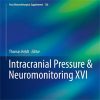When Does an Effusion Become Pericardial Tamponade?
emdocs.netPericardial tamponade occurs when fluid within the pericardial sac impairs filling of the right-sided chambers, leading to a decrease in cardiac output and hemodynamic compromise. It is neither a clinical nor an echocardiographic diagnosis alone. Bedside echocardiography can help diagnose pericardial tamponade when there is already a degree of clinical suspicion. The core findings include: a pericardial effusion, diastolic RV collapse (high specificity), systolic RA collapse (earliest sign), plethoric IVC with minimal respiratory variation (highly sensitive), and exaggerated respiratory cycle changes in MV and TV in-flow velocities as a surrogate for pulsus paradoxus. For a future US Probe. Similar to making the diagnosis itself, the decision to perform a pericardiocentesis will depend on the echocardiographic findings together with the clinical condition of the patient, as well as the suspected etiology of the effusion.

















